Self-adhesive film for the kitchen: features and tips for choosing
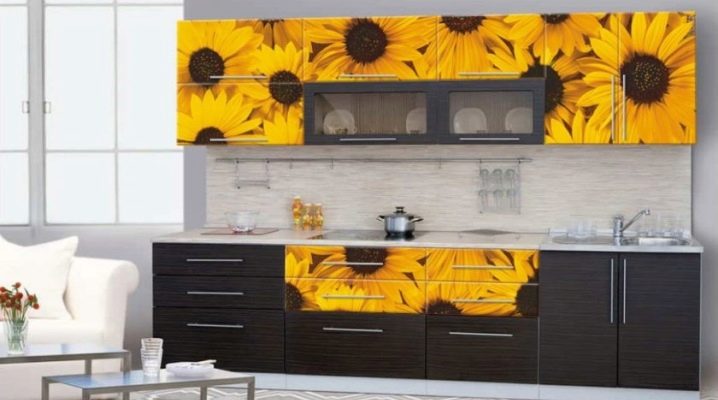
A kitchen is a room with the most intense destructive environmental impact caused by an abundance of steam and moisture, as well as high temperatures, splashes of pollutants and the use of caustic "chemicals" for regular cleaning. In such conditions, repairs are required much more often than in any other place, although the problem can be solved by purchasing special materials and furniture that are highly resistant to all of the above.
True, not everything is so simple, because truly high-quality materials are very expensive. If the time to update the kitchen has come a long time ago, and finances do not allow for a full-fledged update, you can get out with the help of cosmetic repairs made thanks to the self-adhesive film.
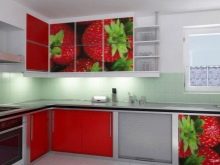
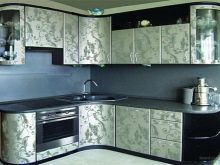
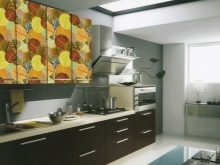
Peculiarities
Most likely, self-adhesive tape is present in your apartment, even if you hear about it for the first time. The fact is that it is intensively used in the furniture industry for external decoration of furniture made of relatively inexpensive and environmentally friendly MDF boards. Today, not all wooden products look like wood, and the same imitation of stone on the countertop is precisely the result of pasting with such a film.
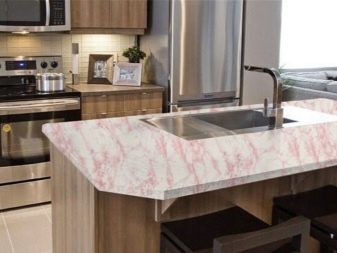
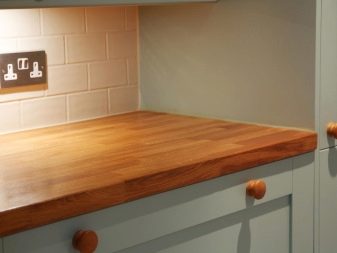
In this case, the film does not perform any function other than decorative, that is, there must be some kind of reliable foundation under it. The repair carried out with its help has a purely cosmetic effect - for example, it makes sense to paste over old doors with it, which are still distinguished by their strength and reliability, but have worn down somewhat over the years of operation and make them blush in front of guests.
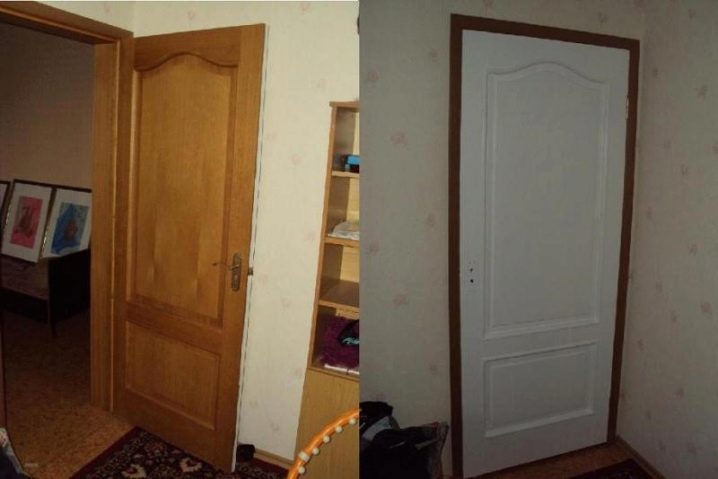
A big plus of such a decorative material is a huge variety of available design options, and if you are also ready to pay extra, then any image you want can be applied to the film to order.
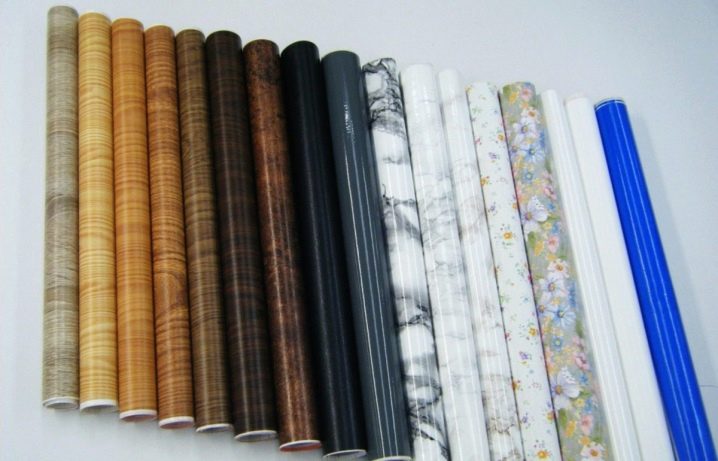
In the case of the kitchen, the possible places of application for such a film are just the sea - it used for pasting doors, furniture, apron, and in specially created varieties - even for pasting windows, imitating stained-glass windows. The material has minimal characteristics for use in the kitchen - it is not afraid of moisture and can even be washed. At the same time, the refractory properties of such a material are questionable, so there is definitely no place for it next to an open fire.
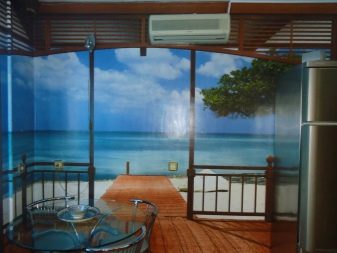
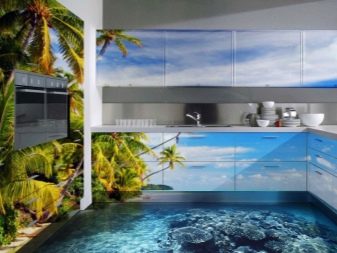
Views
Self-adhesive film is just a general name for a whole group of externally similar products that may differ in material and performance characteristics. For example, such a finish is considered the cheapest of all possible, but the cheapest options are usually made of simple polyethylene, and this option is only suitable for those who like to change the interior design with a high frequency. PVC film it is already considered where better and will last much longer, the same applies to vinyl.
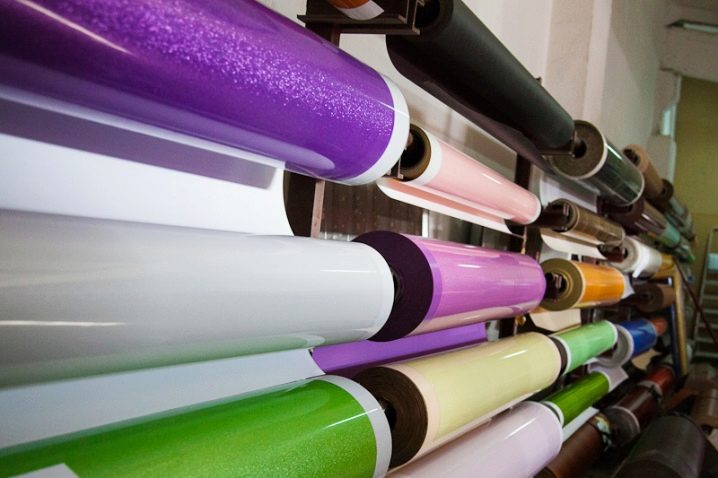
Since the film is most often bought for the aesthetic appeal of the finished surface, it is desirable that it at least does not fade in the sun. If a bright light for your kitchen is uncharacteristic, this can be neglected, but ideally it is worth paying a little extra for the material that has ultraviolet stabilization - then the finish will last longer without replacement.

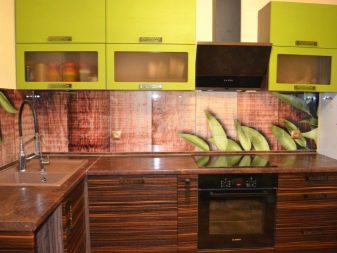
Many modern types of self-adhesive films are loudly called universal, that is, suitable for any conditions of use, but in practice this is more of a marketing ploy, especially when it comes to an inexpensive product. For the kitchen, you should choose especially stable solutions, because the film should be and moisture resistant and heat resistant... A special thermal film can even be located quite close to the stove, however, then one should not think that it will cost at the level of the most budgetary options.
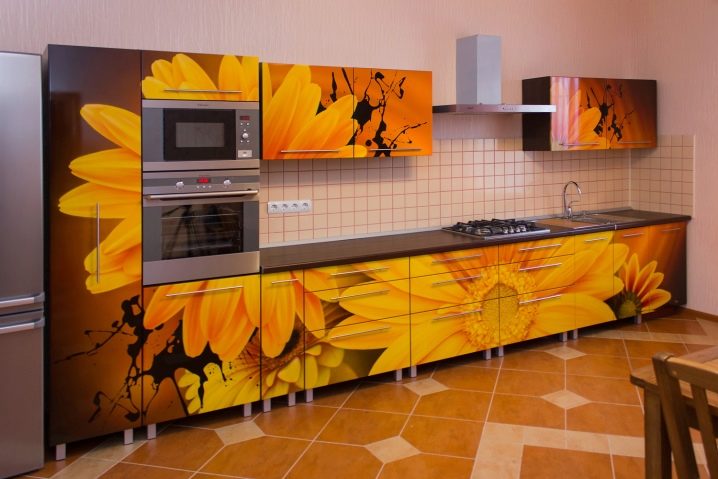
Finally, film can also be classified by image. Most popular types decorated with a certain pattern, but there are also transparent options - They are used to provide additional protection for furniture that still looks beautiful and should stay that way for as long as possible. “Modern” solutions such as mirror or holographic films are becoming more and more popular, but here you need to understand that an attempt to bring excessive glamor with budget materials can look frankly cheap.
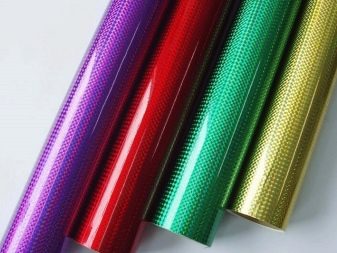

How to choose?
Adhesive kitchen film seems to many to be a simple product that can be bought at any market counter, but if you decide to tackle the business with dignity, the choice should be made deliberately. We have already talked about the specifics of the types of film - there the choice largely depends on your personal preferences and financial capabilities, but there are also such criteria that clearly show whether you are not buying this particular roll in vain.

To begin with, one piece of advice should be given: before buying material, be sure to take measurements of the surfaces that you will paste... Even the film produced by the same manufacturer in different batches may slightly differ in shade. Returning tomorrow for an addition, you risk not only not finding this brand anymore, but also running into another batch with a slightly different shade, because of which either the design will turn out to be non-uniform, or everything will have to be redone all over again.
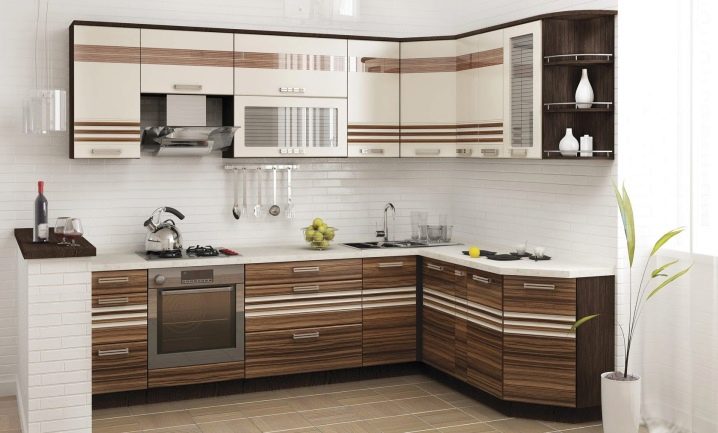
If you have never done pasting before, make at least a minimum amount of tape to correct errors.

When choosing a specific roll, pay attention to several criteria.
- Company and country of manufacture... Not everything is done in China, and European manufacturers are not only of the best quality, but sometimes they also give guarantees for their products. It won't be the cheapest option, but there won't be any obvious problems with film in the future.
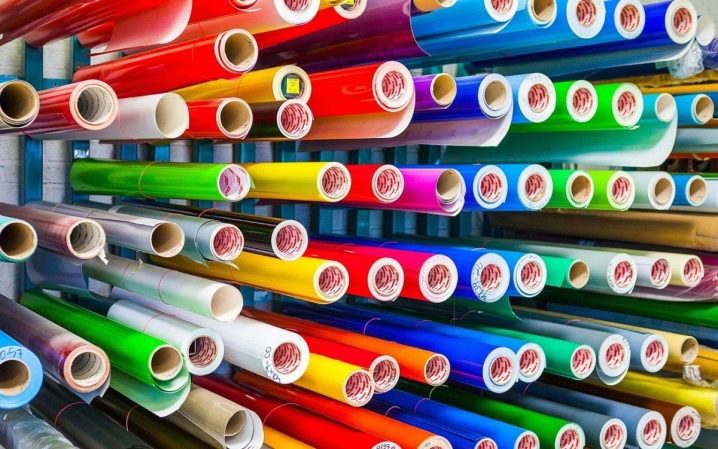
- Material thickness. All films seem very thin, and it will be difficult to determine their thickness by eye, but European products are on average much thicker - up to 0.5 mm. For normal operation, it is usually customary to buy material not thinner than 0.1 mm, but the cheapest Chinese products may not even reach 0.1 mm - it is not surprising that the service life there is very short.
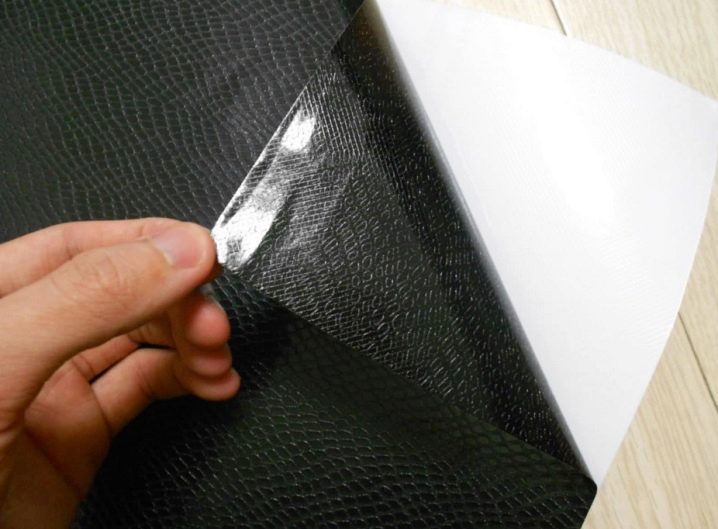
- Range. When buying a film for the first time, you are hardly familiar with its manufacturers, but certain conclusions can be drawn from the width of the company's assortment. If a company offers a variety of materials with a good choice, it means that its production volumes are good, which allows you to buy good equipment and hire professionals. In addition, high awareness usually prevents a brand from doing its job poorly, which means there is a chance that this particular product is worthy.
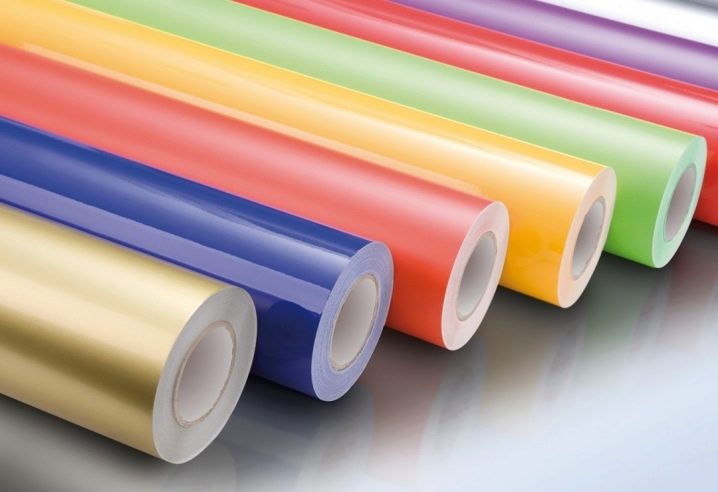
- Operating conditions. Do not forget that a moisture-resistant thermal film is needed for the kitchen, therefore it is advisable that it be written in black and white on the packaging.
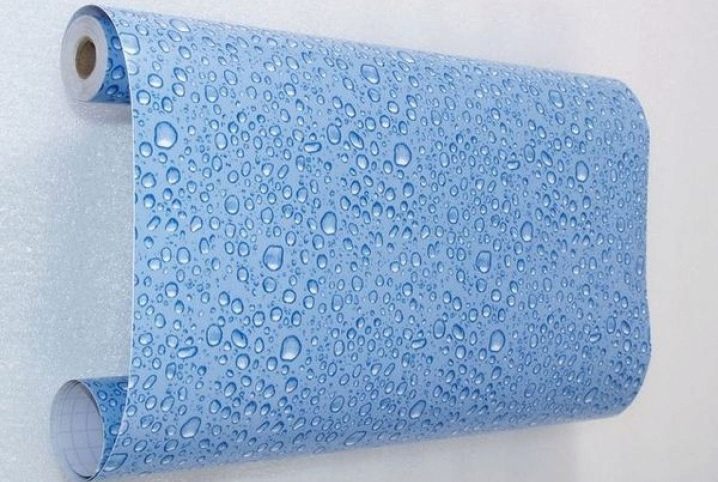
How to properly paste over the kitchen?
The procedure for pasting walls and furniture does not require special skills, but for a good result, you should still first read the minimum instructions. So, when repairing furniture all removable parts are usually advised to be removed first - it's easier to work with them.
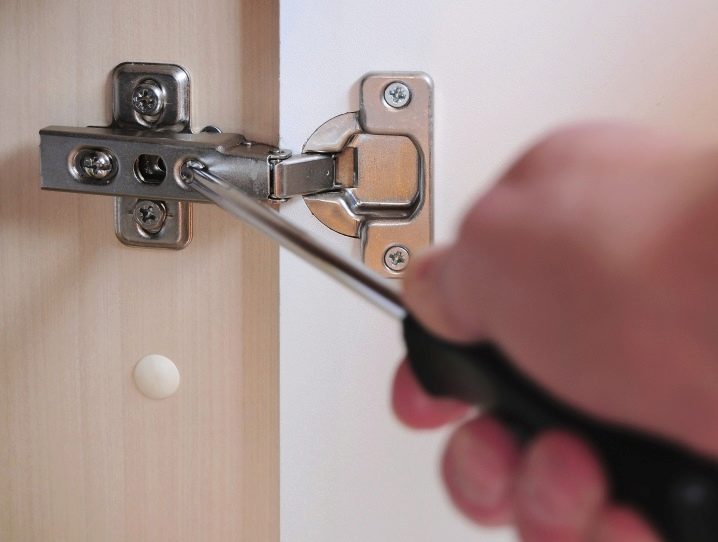
On the wrong side of the film, there is usually a millimeter grid that allows you to cut off the strictly required amount, but keep a ruler at hand - without it, the dimensions of the repaired surface cannot be measured. You can use sharp scissors for cutting, but a clerical cutter is even better - this way the cuts will be free of scraps. Pasting is done exclusively on clean and grease-free surfaces, therefore, they are preliminarily washed with soap, and then, already dried, are treated with white spirit.
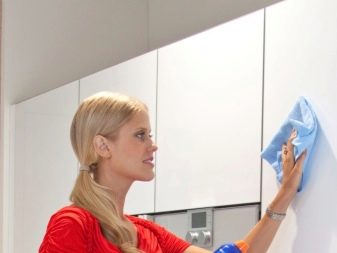
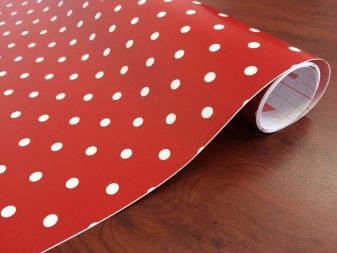
In addition, the surface should be perfectly flat, therefore, if possible, it is pre-treated with sandpaper.
When everything is ready, the part to be pasted is measured, a piece of film is cut according to the dimensions obtained and applied to the part with its "face" upwards. If the dimensions match, in one of the corners part of the substrate is slightly bent and the adhesive side is pressed against the surface to be repaired. The substrate is folded back gradually, as the films are glued, formed air bubbles are removed with an elastic spatula... If in the process of gluing the fragment stuck unevenly, the blot is corrected immediately, carefully peeling off and gluing again, already correctly.
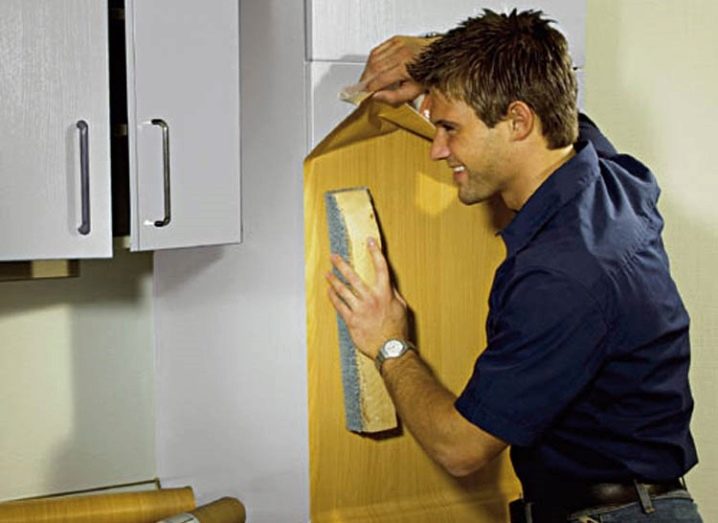
Some of the bubbles will inevitably remain, therefore, after they are completely glued, they are pierced with a needle and also smoothed with a spatula. For perfect smoothness and reliable adhesion, the glued surface is also passed through with a powerful hairdryer - heating removes small folds.
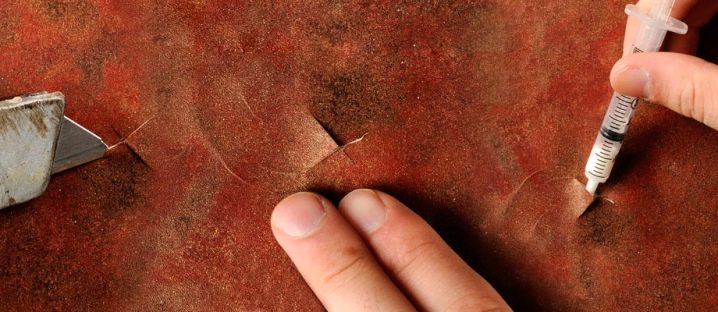
Design examples
In skilful hands, self-adhesive film is no longer just a means to restore the appearance of a kitchen, but also a great way to make it beautiful and unique. Most often, of course, natural drawings are used - either flowers, as in the first example, or fruits and vegetablesthat cheers up and improves appetite.
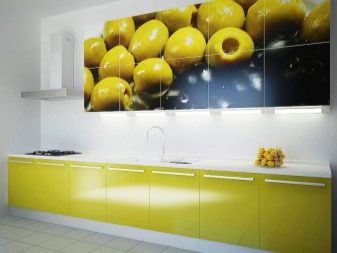
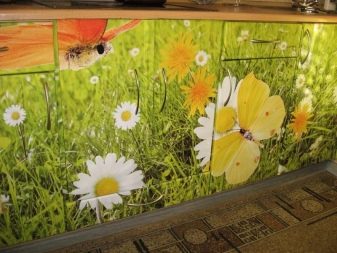
However, no one bothers you to decorate the kitchen in accordance with your own idea of how this room should look like. No more standard solutions - for example, if you like urbanism, you can delight yourself in a provincial town landscapes of the metropolis.

The main thing is to do it carefully and with taste, as in the second example, without going too far, otherwise it will only get worse.
With the help of the film, you can repair almost any surface, even if it is not necessarily related to the kitchen - for example, the same doors. In addition to the fact that they will no longer look shabby, now such an accessory can become a real decoration of the room and its main accent, which is clearly confirmed in photo number three.
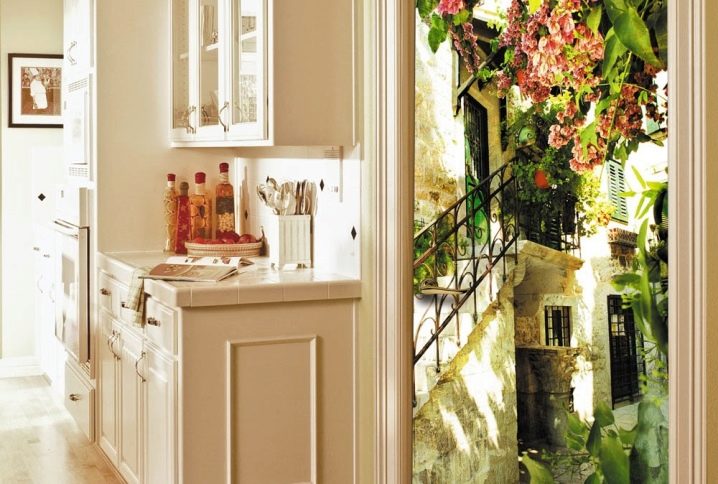
You will learn even more about self-adhesive kitchen foil in the following video.













The comment was sent successfully.